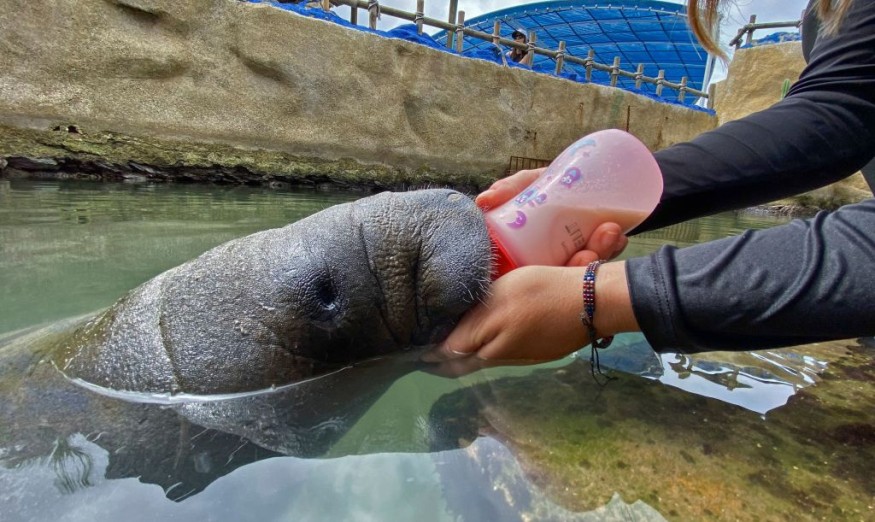Manatee babies are nursed by their mothers immediately after birth. Female manatees, called cows, are really good mothers who take excellent care of themselves during the gestation period and ensure that their young are safe.
However, unfortunate things happen that could separate manatee mothers from their calves. One example is Tasajerito, who was only three days old when experts found him being lost in a Colombian swamp last September. He was immediately rescued and is now in safe hands who takes care of him.

Meet Tasajerito: The Rescued Orphaned Baby Manatee in Colombia
It has been nine months since Tasajerito was rescued and the baby sea cow now weighs as much as an adult and is bottle-fed round the clock by the staff at the aquarium, Phys.org reported.
Although he is stronger now, veterinarian Angela Davila from the Rodadero Aquarium in Santa Marta, northern Colombia, said that Tasajerito's prognosis is still touch-and-go. He is still considered critical despite appearing strong, lively, and feeding well.
The baby manatee was rescued by fishermen and was brought to the aquarium with little hope of survival when they found him. Unfortunately, they were unsuccessful in finding his mother.
But he is now safely ensconced in a dedicated pool at the aquarium where he has clung to life. In just a few months, his consumption of a special vitamin-boosted milk formula has increased six-fold.
Today, the baby manatee measures over 4.9 feet (1.5 meters) in length and weighs 117 pounds (53 kilograms). Even with this size, marine biologist Julieth Prieto noted that Tasajerito is still a newborn who is supposed to be raised by his mother for five years and feed on its mother's breast for half of that time.
"This makes the rehabilitation process... a challenge because we have to meet those needs that the mother usually provides," Phys.org quoted the Rodadero marine biologist.
Tasajerito is now being taught to float, dive, and swim by his human foster parents so that he can live on his own when he is released into the wild one day.
American Manatees Listed as Vulnerable Species
The International Union for Conservation of Nature (IUCN) Red List has listed Tasajerito's species, the American manatee (Trichechus manatus), as a vulnerable species with only 10,000 individuals left.
IUCN said that commercial development, aquaculture, shipping lanes, and watercraft strikes are just some factors threatening the manatee population.
Aside from that, some humans have also captured manatees to import them as pets much like hippos in the 1980s, a trade introduced by drug trafficker Pablo Escobar. Manatees are one of the largest aquatic mammals in the world, which fulfill irreplaceable ecological functions in areas where they are usually seen.
Prieto said that these species help keep rivers and water channels become clear as they can devour up to 50 kg of aquatic plants daily during seasonal migration. If manatees become extinct, water flow between rivers, swamps, and the sea will be significantly affected.
RELATED ARTICLE: Pollution Endangers Florida Manatees: Conservationists Try Everything Including Lettuces to Save the Beloved Marine Mammals
Check out more news and information on Manatees in Science Times.








